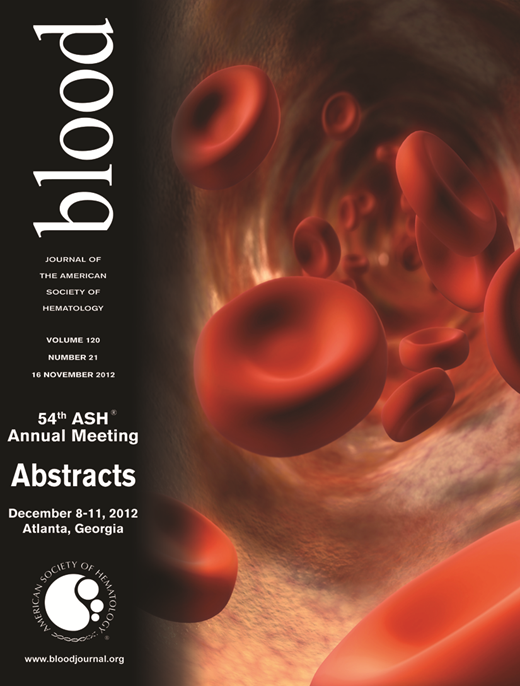Abstract
Abstract 1431
T-cell Acute Lymphoblastic Leukemia (T-ALL) affects about 15% of children with ALL. MLLT10 at 10p12 encodes for a transcription factor and is involved in leukemogenic fusions with PICALM or MLL in about 10% of childhood T-ALL with overexpression of HOXA cluster genes. In case of gene fusion MLLT10 retains the “octapeptide motif-leucine zipper” (OM-LZ) domain that appeared to be essential for leukemic transformation in mouse models (Deshpande AJ et al. Leukemia 2011) as it interacted with critical components of the chromatin modifying machinery, such as H3K79 methyltransferase hDOT1L (Okada Y et al. Cell 2005). Recently, in a case of early T-cell precursor ALL, NAP1L1 at 12q21 was identified by whole-genome sequencing as a new MLLT10 fusion partner gene (Zhang J et al. Nature 2012). We identified two new fusion transcripts involving MLLT10 in 2 cases of pediatric T-ALL suggesting MLLT10 is a promiscuous fusion partner gene in T-ALL.
Characterization of new MLLT10 fusion transcripts in 2 pediatric cases of T-ALL.
Total RNAs were extracted from cryopreserved bone marrow cells and retrotranscribed with MLLT10 specific reverse primer using 5'-RACE kit (Invitrogen). cDNAs were amplified in nested PCR using AAP/AUAP (Abridged Anchor Primer, Abridged Universal Amplification Primer, Invitrogen) as forward and MLLT10 specific primers as reverse. To confirm fusion transcripts we performed RT-PCR experiments using Thermoscript RT-PCR System (Invitrogen). cDNAs were amplified in nested PCR using HNRNPH1 and DDX3X specific primers as forward in patient 1 and 2 respectively and MLLT10 specific primers as reverse in both samples. PCR products were subcloned into pGEM-T easy vector (Promega) and sequenced. Whole genome analysis was performed applying Combined-Interphase Fluorescence In Situ Hybridization (CI-FISH) for 32 candidate genes as previously described (Gorello P et al. Haematologica 2010); Single Nucleotide Polymorphisms (SNPs) were performed following manifacturer's instructions (Affymetrix); Gene Expression Profiling (GEP) was applied to investigate the hypothesis that both new MLLT10 fusion genes shared leukemogenic properties with other MLLT10 fusions, particularly PICALM-MLLT10.
In patient 1 the karyotype was 46,XX,inv(10)(p12q?)/46,XX. CI-FISH on bone marrow nuclei showed MLLT10 rearrangements (55%) and IKZF1 deletions (10%). The 10q disruption was located at 10q25.3 in a region of about 12 kb flanked by fosmid G248P87999G12, retained on inv(10), and RP11–411P18 translocated to chromosome 5. SNPs analysis was normal for copy number and LOH profile.
In patient 2 cytogenetics failed. CI-FISH revealed a 9p deletion, with loss of PAX5 (9p13), CDKN2A/B (9p21) and JAK2 (9p24) in about 75% of interphase nuclei. MLLT10 break apart was abnormal in about 60% of nuclei, with break within RP11–418C1 spanning MLLT10 exons 1–3. SNPs analysis showed a 47,5Mb loss at 9p24.3-p11.2 and a 33,51Mb gain at 17q21.32-q25.3.
5'-RACE-PCR showed HNRNPH1 in patient 1 and DDX3X in patient 2 as two new MLLT10 partner genes in T-ALL. RT-PCR, cloning and sequencing confirmed these results. We found 2 in frame splicing variants in both cases: HNRNPH1 exon 11 (nt.1324)-MLLT10 exon 15 (nt. 2097) and HNRNPH1 intron 10 (nt. 6701)-MLLT10 exon 15 (nt. 2097) in patient 1; DDX3X exon 2 (nt. 958)-MLLT10 exon 3 (nt. 510) and DDX3X exon 1 (nt. 900)-MLLT10 exon 4 (nt. 590) in patient 2 (nucleotide numbers refer to GenBank accessions NM_005520.2 and NC_000005.9 for HNRNPH1, NM_001356.3 for DDX3X and NM_004641.3 for MLLT10). GEP showed that the new MLLT10 fusions were similar to 4 cases with PICALM-MLLT10 fusion but different from 5 other T-ALL, i.e. 2 with MLL translocations, 2 with inv(7)(p15;q34)/TCRB-HOXA and 1 with SET-NUP214 fusion, with a HOXA signature.
These two cases add new insights in multiple genomic recombinations affecting MLLT10 in pediatric T-ALL. Both new partner genes, i.e. HNRNPH1 and DDX3X, are involved in RNA processing and have not been reported to be involved in any genomic specific translocations, so far. The presence of the MLLT10 OM-LZ domain in both new fusions as well as the GEP of leukemic cells suggest that these MLLT10 recombinations activate the same leukemogenic pathways as identified for PICALM-MLLT10 and suggest promiscuity of MLLT10 in recombinations with leukemogenic genes.
No relevant conflicts of interest to declare.
Author notes
Asterisk with author names denotes non-ASH members.

